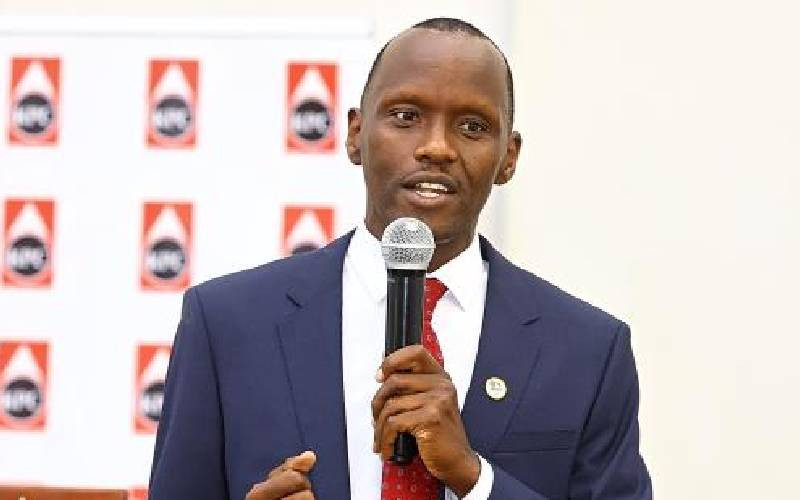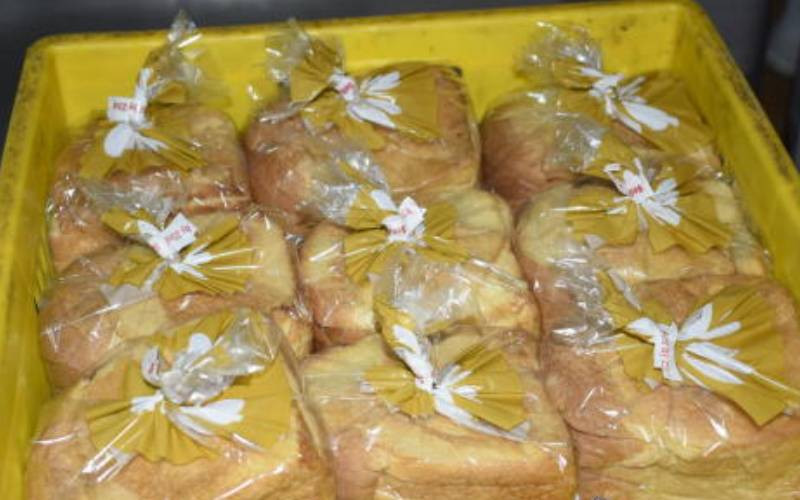Kenya is set to borrow Sh103 billion ($1 billion) through a commercial loan arranged by four banks.
This signals the Treasury’s return to the syndicated loan market as its preferred avenue for borrowing, and the end of Eurobond era.
Syndicated loans are arranged by a group of lenders, called a syndicate, for a single borrower.
The Treasury had been toying with the idea of raising a Eurobond last year, and even went ahead to carry out a roadshow in London in April 2016.
But as the year wore down, the Eurobond window closed. Last week, Reuters reported that Kenya had appointed Standard Chartered, Standard Bank, Citigroup and Rand Merchant Bank to arrange a syndicated loan.
Global news wire, Bloomberg, reported that the Treasury plans a mix of a syndicated loans and concessional loans from development finance institutions to the tune of Sh105 billion ($1.05 billion).
A concessional loan is offered either at an interest rate below what is in the market or with a grace period, or both.
Borrowing cost
Treasury Principal Secretary Kamau Thugge told Bloomberg that the Government has already secured Sh25 billion ($250 million) from East African trade-finance PTA Bank.
This is the second time Kenya is opting for a syndicated loan after it sought $600 million arranged by Citigroup, Standard Bank and Standard Chartered in 2015.
“The era of cheap, large Eurobonds might, and should, be over. There has been an artificial depression of the risk-free rate, and thus alpha risks have appeared relatively benign. Its now time to discover the true standing of Kenya in the markets,” said Deepak Dave, an analyst at Riverside Capital, a risk management firm.
The decision to go for the syndicated loan may have been both political and financial, as the Treasury moves to plug the country’s Budget deficit.
Financial because when Kenya failed to go to the open market before December when the US Federal Reserve raised interest rates, it faced higher borrowing costs.
The move by the Fed, which has scheduled three more rate jumps within this year, would make dollar debt in the international market expensive.
Investors will also be risk averse, preferring investment in the US economy, especially since President Donald Trump has promised tax cuts on repatriated cash and infrastructure spending.
Stay informed. Subscribe to our newsletter
“Given recent happenings in the international markets: (i) Mozambique’s default; (ii) Fed rate hike; and (iii) Investors’ negative perceptions around a weak economic growth curve across sub-Saharan Africa, the risk premium has significantly risen across the region,” said George Bodo, the head of banking research at Ecobank.
“Consequently, I think Kenya would have failed to secure any fine pricing had it opted for the open market. It was a smart move to swap syndication for a Eurobond.”
The decision was also political because it would mean raising a Eurobond in an election year, when investors are traditionally risk averse.
The Opposition is also likely to rally its campaigns against the alleged misuse of the first Eurobond, as well as Mozambique’s default, which has great implications on African, and Kenyan, Eurobond issues specifically in two ways.
Facing reality
One, investors are facing the reality that African countries may be unable to pay, and two, the International Monetary Fund (IMF) has shown that it will not support countries that misuse or steal Eurobond proceeds.
The IMF pulled its budget support for Mozambique last year when it emerged that the country had misinformed the fund about the size of its debts.
In Kenya, CORD leader Raila Odinga has sustained attacks on the Government, insisting that the Sh250 billion Eurobond issued in 2014 has not been accounted for.
Mr Odinga has even threatened to declare the sovereign bond an illegitimate debt, which is a national debt incurred by a regime for purposes that do not serve the best interests of the nation and should not be enforceable. This has not been lost on investors.
Africa’s love for sovereign bonds started after the 2008 crisis when the US supported its banks through quantitative easing (a central bank’s introduction of new money into the money supply), and kept interest rates at almost zero for nearly a decade.
African states had previously relied on bilateral and multilateral concessional loans, which came at rates as low as 1 per cent. However, these loans came with stringent conditions and became fewer after the financial crisis.
The option was syndicated loans, whose spread or rate of return is usually calculated on average US treasury rate expectations during the duration of the loan, risks and a profit margin.
However, even these loans came with stiff conditions that were not revealed by governments and were expensive to renegotiate if a government could not repay them.
In fact, Kenya had to pay off a syndicated loan with its first Eurobond proceeds after long negotiations to refinance did not pan out.
“The downside of syndicated loans are that the terms are always more stringent, and much less flexible if trouble hits. Also, pricing resets can be harsh, and there is often a forced hedge that adds to the cost,” Mr Deepak said.
Open market
The open market, on the other hand, had more money and took up loans at coupon rates of between 6 and 11 per cent based on the risk and the structure of an economy, and the rates offered to peer countries.
Seychelles was the first African country to take up the dollar debt in the open market, followed by Côte d’Ivoire, Senegal, Angola, Nigeria, Tanzania, Namibia, Rwanda, Kenya, Ethiopia and Zambia. They raised in excess of $19.5 billion (Sh2 trillion at current exchange rates).
But experts, including African Development Bank Group President Akinwumi Adesina, warned African countries that they risked debt distress, especially if the dollar strengthened against their currencies.
Kenya, which borrowed the Eurobond when the shilling was trading at Sh87 against the greenback in June 2014, has seen its exchange rate slide to 103.8 against the dollar. This means it costs the country more shillings to buy dollars to pay back the debt.
The other risk was that the proceeds of the Eurobond would end up being invested poorly in projects that would not generate money to pay back the financing.
Kenya has not been able to specifically show which projects were funded by its Eurobond, and may end up paying back the debt from tax collections.
This will make it even more difficult to finance development projects, as most of the country’s revenue goes into paying debts.
The country may also be forced into borrowing to pay the debt, or turn to the IMF like Ghana and Mozambique have done.
An IMF bailout, however, comes with austerity measures.
In Ghana’s case, for instance, the country was forced to review tax exemptions for free-zone companies and state-owned enterprises, set up a new tax policy for small businesses, and raise value-added tax.
[email protected]
 The Standard Group Plc is a
multi-media organization with investments in media platforms spanning newspaper
print operations, television, radio broadcasting, digital and online services. The
Standard Group is recognized as a leading multi-media house in Kenya with a key
influence in matters of national and international interest.
The Standard Group Plc is a
multi-media organization with investments in media platforms spanning newspaper
print operations, television, radio broadcasting, digital and online services. The
Standard Group is recognized as a leading multi-media house in Kenya with a key
influence in matters of national and international interest.
 The Standard Group Plc is a
multi-media organization with investments in media platforms spanning newspaper
print operations, television, radio broadcasting, digital and online services. The
Standard Group is recognized as a leading multi-media house in Kenya with a key
influence in matters of national and international interest.
The Standard Group Plc is a
multi-media organization with investments in media platforms spanning newspaper
print operations, television, radio broadcasting, digital and online services. The
Standard Group is recognized as a leading multi-media house in Kenya with a key
influence in matters of national and international interest.








